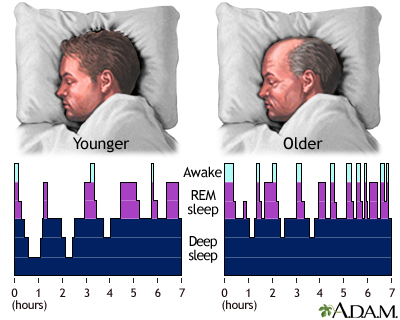

REM is the unique fourth stage of sleep characterized by rapid eye movement (hence the name) and brain activity patterns similar to when you are awake. During this sleep stage, your brain transfers short-term memories from your motor cortex to your temporal lobe, ensuring they become long-term memories. REM is essential for your mental and emotional recovery.

In this blog, we’ll look at how and why it occurs, how much you ideally need each night, and what happens if you experience too much REM sleep. REM sleep happens every night, but several factors can affect the amount you experience. This provides an opportunity to study how the disease progresses in the brain and to develop therapies that could either slow this process or prevent it from happening.Ever woken up from a long, vivid dream and thought, “What the devil was all that about?” Chances are, you were having an adventure in your REM stage of sleep, where your body may be still, but your mind is dynamically active. RBD, in that scenario, is an early sign of those disorders.
Staying in rem sleep not getting deep sleep full#
Does an early diagnosis help?įor most neurodegenerative disorders, there is a phase that may last for decades in which brain changes are taking place but the patient either remains asymptomatic or develops symptoms without the full expression of the disease. The association is also not as strong as that observed in the synucleinopathies. REM sleep behavior disorder may also be observed in other neurodegenerative disorders such as Alzheimer’s disease and Huntington’s disease, but at much lower rates. Some of the factors that independently increased the risk of developing a neurodegenerative disorder were the presence of irregular motor symptoms, abnormal dopamine levels, loss of sense of smell, cognitive impairment, abnormal color vision, erectile dysfunction, constipation and older age. After 12 years, 73.5% of those with REM sleep behavior disorder had developed a related neurodegenerative disorder. In a long-term study of 1,280 patients with REM sleep behavior disorder who didn’t have parkinsonism – an umbrella term that refers to brain conditions, including Parkinson’s disease, that cause slowed movements, stiffness and tremors – or dementia, researchers followed participants to find out how many would develop these disorders. It is observed in 25% to 58% of patients diagnosed with Parkinson’s, 70% to 80% of patients with dementia with Lewy bodies and 90% to 100% of those with multiple system atrophy. REM sleep behavior disorder may be the first symptom of Parkinson’s disease or dementia with Lewy bodies. What are the links between the sleep disorder and dementia? People with REM sleep behavior disorder can injure themselves – and their bed partners. REM sleep behavior disorder may precede these diseases or occur at any time during the disease process. Others are dementia with Lewy bodies, multiple system atrophy and pure autonomic failure. The most common of these neurodegenerative disorders is Parkinson’s disease. In both situations, REM sleep behavior disorder may be associated with synucleinopathies, a group of neurodegenerative disorders in which aggregates of the protein α-synuclein accumulate in brain cells. In other cases, the disorder may be caused by something specific, such as obstructive sleep apnea, narcolepsy, psychiatric disorders, use of antidepressants, autoimmune disorders and brain lesions, which are areas of damaged brain tissue. In some cases of REM sleep behavior disorder, a clear cause cannot be identified. The disease mechanism is not well understood. For those younger than 40, antidepressants are the most common cause of REM sleep behavior disorder in these younger patients, it affects biological males and females about equally, but past age 50, it’s more common in biological males.

REM sleep behavior disorder can occur at any age, but symptoms usually start with people in their 40s and 50s. This is a disorder in which breathing is interrupted during sleep. Some 60% of patients and 20% of bed partners of people with this disorder sustain an injury during sleep.Īppropriate testing, including a sleep study, are needed to determine if a patient has REM sleep behavior disorder, as opposed to another disorder, such as obstructive sleep apnea. Injuries often result from these incidents patients may fall from bed or accidentally harm a partner.


 0 kommentar(er)
0 kommentar(er)
